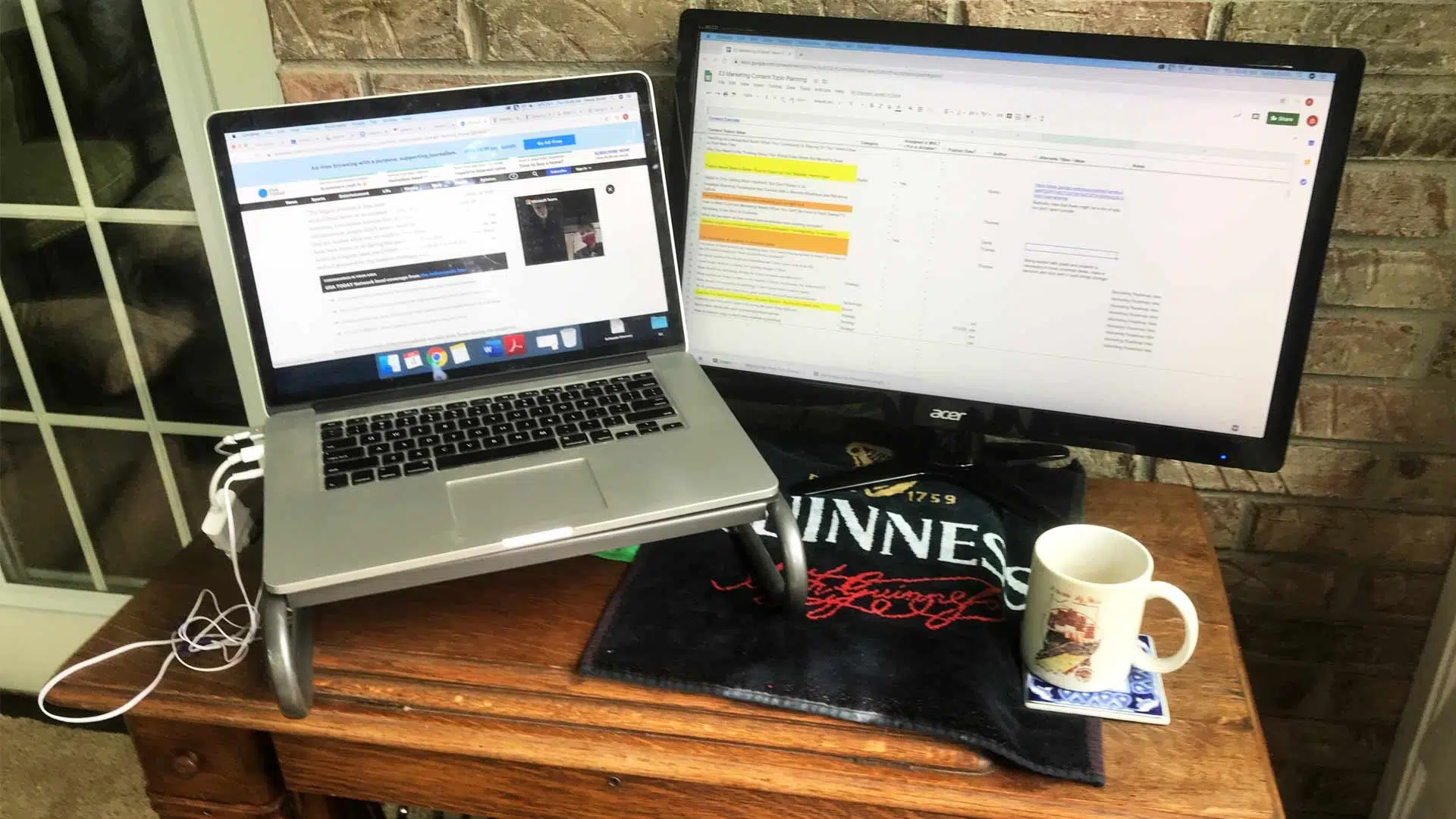We’ve been living through an unprecedented experiment about the nature of work—how it gets done, when it gets done, and where it gets done—as millions of Americans have spent months working from home as part of the safety protocols for COVID-19. Now, as social distancing restrictions are eased, American employers are pondering how to apply the business lessons learned from managing a largely remote workforce. Should employees start migrating back to the office, or continue working from home? Or is a more flexible arrangement in order?
Opinions on this subject are divided, yet it’s clear that remote work is here to stay. In 2018, nearly a quarter of the U.S. workforce (23.7%) worked some hours from home on an average day, according to the U.S. Bureau of Labor Statistics data cited by The Brookings Institution. And even before the coronavirus crisis, the scope of remote work was expanding. An analysis of 11,000 home-based or remote workers found that 22 percent of employers were completely remote companies with no headquarters. Also before the outbreak, a survey of more than 1,500 workers by benefits provider Unum found that flexible and remote work options were the second most-desired non-insurance perk in a list of 16 options.
Remote work clearly has its share of advantages—and disadvantages. As McKinsey & Company puts it,
“Done right, remote working can boost productivity and morale; done badly, it can breed inefficiency, damage work relationships, and demotivate employees.”
Let’s take a look at the lessons we’ve learned so far and what the future of remote work could look like. We’ll start with some employee lessons, and then move on to what your business as a whole can learn.
Lessons for employees
Millions of Americans weren’t used to working at home before the COVID-19 pandemic hit. However, many of those workers have found that remote working has its share of advantages.
In a survey of professionals ages 18-74 conducted by YouGov in partnership with USA Today and LinkedIn, 54% of respondents said that working from home during the COVID-19 pandemic has had a positive effect on their productivity. They listed reasons for this as:
- Time saved from commuting (71%)
- Few distractions from co-workers (61%)
- Fewer meetings (39%)
However, working from home can take an emotional toll on employees. This same survey found that 51% of respondents feel lonely working from home, with 20% feeling lonely all or most of the time.
With that in mind, here are some helpful tips to help you work remotely without burning yourself out.
Lesson 1: Jump-start your day with coffee or a familiar routine.
Coffee has always been a part of how I start my work day. In the office, I would always turn my computer on, grab a cup of joe, and then start sipping as I caught up on emails and looked at my schedule for the day. Now I brew my coffee here at home and bring it with me when I start the day at my home workspace.
Lesson 2: Build a dedicated workspace.
I’ve found that a dedicated workspace helps you get in the right mindset. When I first started working from home, I reacted to my wife’s work schedule and daughters’ e-learning lessons by moving from room to room with my laptop over the course of the day. Eventually, I built a dedicated workspace that feels more “normal”; I grabbed my monitor from the office to serve as a second screen that helps me stay productive and comfortable.
Lesson 3: Get creative in how you socialize.
Mimic normal office socialization as best you can with Google chat, video conferences to share lunch, and the like. Seeing your colleagues on Zoom isn’t the same as face-to-face, but it’s better than nothing.
Lesson 4: Collaborate with video and software tools.
If you’re used to collaborating in person on a whiteboard, you can instead use video platforms in conjunction with collaboration software that allows everyone to add their ideas. On website wireframes, for example, we schedule Zoom meetings to collaborate with Figma software.
Lesson 5: Take regular breaks.
When you’re working by yourself, it can be easy to work for hours at a time just sitting with your laptop or at your desktop. But if you’re not careful, you can burn yourself out. So take some breaks over the course of the day, like going for a walk around the neighborhood to get some fresh air.
Lesson 6: Set digital boundaries.
When you have your computer at home, you need to set boundaries so that you can unplug when it’s time to be done. You can do this by:
- Keeping your calendar updated to reflect your meetings, dedicated work blocks, and times when you’re unavailable; this will not only help you stay focused, it will help your colleagues know what you’re working on, when you’re busy, and the best times to reach you.
- Leaving your laptop in your workspace when your work day is done. That way, you’re not in 24/7 work mode.
Lesson 7: Show grace to those with different schedules.
Some of us are morning people, while others are most productive mid-day. Still others of us are night owls or need to wrap up their work after they’ve put their kids to bed. So, not everyone is going to work a traditional 9-to-5 schedule, and as long as they’re delivering quality work, communicating with colleagues, and meeting their deadlines, you should be okay with that.
Lessons for employers
If you’ve found it difficult to manage a dispersed workforce, you’re not alone. In fact, 71 percent of organizations are struggling to adapt to remote work, especially when it comes to productivity and communication, according to research from the Society for Human Research Management (SHRM).
Lesson 1: Create a structured approach to remote work.
EY notes that most organizations don’t appreciate the breadth and depth of implementing remote work, and that long-term success requires a structured approach that involves:
- Leadership, clear guidelines, and real commitment to migrate the right infrastructure and tools
- Securing your infrastructure to protect your company from breaches and cyber attacks
- Investing in your employees’ well-being so they can achieve balance in their work and private lives
Lesson 2: Supercharge your company communications.
In studying how Chinese firms handled the disruptions of the coronavirus, McKinsey & Company created a blueprint for remote working. One tip is to make sure you’re using the right channels for different types of communications. Video conferences are ideal for discussing complex topics in real time, while email works for more formal communications and backlog management tools can help your employees stay on top of tasks and processes. Check out their full list of communications channels for remote working here.
Lesson 3: Stay connected to—and overcommunicate with—your team.
In the wake of COVID-19, Microsoft managers in China doubled their use of Microsoft Teams voice and video calls from 7 to 14 hours per week, and also relied heavily on instant messages. It’s easy to find yourself feeling disconnected when you’re not all in the same office. You have to make the effort if you want to stay on the same page.
Lesson 4: Create a business continuity plan.
Pandemics are just one threat that can force you to close your office. CEO Today Magazine recommends that you take this opportunity to prepare your business with a clear plan that assesses the most likely crises to impact your operations, and what you should do to mitigate them.
Lesson 5: Conduct drills for future emergencies.
Could remote working now become more commonplace? CEO Today Magazine recommends planning for “emergency drills” 2-4 times a year—a sort of fire drill that prepares employees for shifting back to remote work and identifies any improvements in your systems and processes that need to be made.
Lesson 6: Provide flexibility in returning to the office.
As you prepare for employees to start returning to the office, Gartner recommends that you empower your employees to make choices that are best suited to their needs and comfort levels. Some employees might be ready to return right away, while others might want to continue working from home or need to continue keeping an eye on their kids.
Lesson 7: Amplify your corporate values.
When employees are working remotely, it’s even more important to amplify your company values on virtual channels—and reinforce that employees are contributing to a larger purpose. This can be done in all-company meetings, team meetings, and one-on-ones as well as interest-based employee groups like movie clubs, trivia competitions, and the like.
Distance learning
Keep in mind that this is a learning experience for everyone involved, even for those who have worked remotely before. So show empathy for your team as they adjust to—and start to return from—a different working environment.
You’ll also want to make sure that your people have plenty of resources. Here are a few online ones you might find helpful:
Working Remotely – How to Make it Work, Harvard Business School
COVID-19 Resource Center, Gartner
Master the art of remote work, Cisco Webex
Finally, stay transparent about how your company is being affected by what’s going on and how you’re handling it. Remind everyone there’s a light at the end of this tunnel, even when it’s hard to see.




